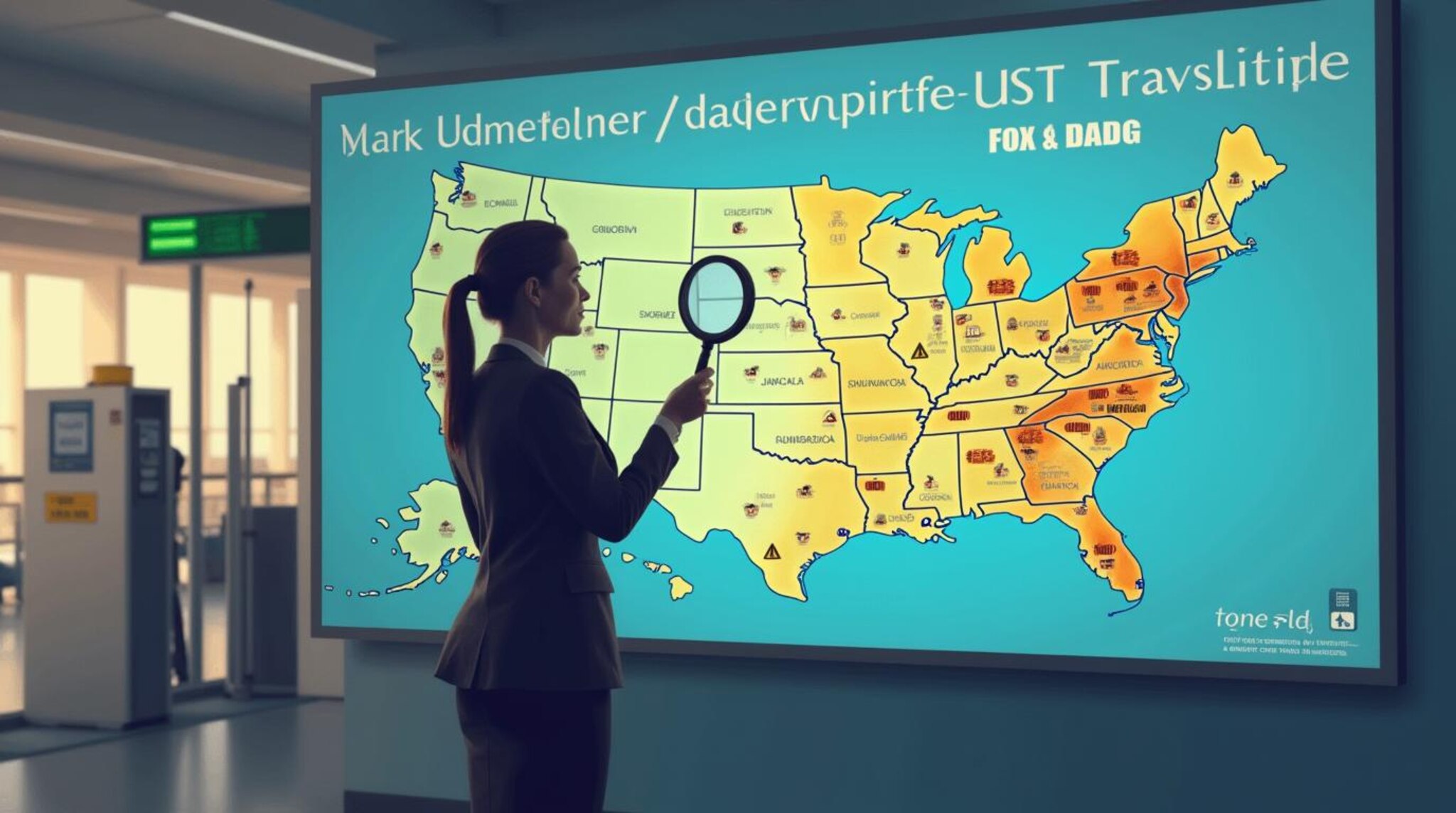Canada's New US Travel Warning: What You Must Know
Introduction: Understanding the Updated Travel Advisory
Canada has updated its travel advisory for the United States. This is big news for Canadian travelers. The changes affect millions of people. Many Canadians visit the US each year. They go for vacation, business, and family visits. The new advisory gives important safety information. It helps Canadians make smart travel choices. This update comes from Global Affairs Canada. They monitor safety around the world. Their job is to protect Canadian travelers. The advisory covers many safety topics. These include crime, health, and weather risks. It also talks about local laws and customs. Understanding these updates is crucial. It can make your trip safer and more enjoyable. We will explore all the details in this guide. You will learn what changed and why it matters. We will also give practical travel tips. These will help you stay safe on your next US trip. Travel advisories are not meant to scare you. They provide useful information. This helps you prepare for your journey. Let's dive into the specifics of Canada's updated US travel advisory.
What Exactly Changed in the Advisory?
The travel advisory update includes several key changes. These changes reflect current conditions in the United States. Global Affairs Canada reviews advisories regularly. They look at many factors before making updates.
Risk Level Adjustments
The advisory now has updated risk levels for some areas. Risk levels range from 1 to 4. Level 1 means exercise normal security precautions. Level 2 means exercise a high degree of caution. Level 3 means avoid non-essential travel. Level 4 means avoid all travel. Some US regions now have higher risk levels. This is due to increased crime rates in certain cities. Other areas have new health warnings. These include extreme weather alerts too.
New Safety Information
The update adds new safety information. It covers transportation safety more thoroughly. There are new details about road conditions. The advisory also mentions natural disaster risks. These include hurricanes, wildfires, and tornadoes. Some regions have specific health warnings. These might be about local disease outbreaks. The advisory also updates information about local laws. This is important for Canadian visitors.
Regional Specific Updates
Different US states have different risk levels. The advisory now breaks down risks by region more clearly. Some areas have higher crime warnings. Others have weather-related cautions. The advisory uses color-coded maps. These show risk levels across the country. You can check these maps before traveling. They help you understand local conditions.
Why Did Canada Update the US Travel Advisory?
Several factors led to this advisory update. Global Affairs Canada monitors many information sources. They work with international partners too. Here are the main reasons for the update.
Changing Crime Statistics
Crime data from US authorities showed some increases. Certain cities reported higher violent crime rates. FBI crime statistics influenced this update. Some areas saw rises in specific crimes. These include theft, assault, and carjackings. The advisory reflects these changes. It helps Canadians avoid high-risk areas.
Health and Safety Concerns
New health information prompted some updates. Some US regions have disease outbreaks. Others have limited healthcare access. CDC health data contributed to these changes. Extreme weather patterns also played a role. Climate change has increased weather risks in some areas. The advisory now reflects these concerns better.
Political and Social Factors
Recent events in the US affected the advisory. Social unrest in some cities was considered. Election-related tensions in some areas too. The advisory aims to help Canadians navigate these situations. It provides guidance on avoiding trouble spots.
Key Areas of Concern in the Updated Advisory
The updated advisory highlights several specific concerns. Understanding these can help you plan safer travels.
Urban Safety Precautions
Many popular tourist cities have new warnings. These include:
- Avoid walking alone at night in certain areas
- Keep valuables out of sight in tourist spots
- Use hotel safes for important documents
- Be aware of your surroundings in crowded places
- Use licensed taxi services only
Transportation Safety
The advisory has new transportation warnings. These cover:
- Road safety in different regions
- Public transportation precautions
- Air travel security measures
- Rental car safety tips
- Rideshare service guidelines
Health and Medical Information
Health considerations in the update include:
- Vaccination requirements for certain areas
- Mosquito-borne illness precautions
- Food and water safety tips
- Emergency medical service information
- Prescription medication guidelines
Practical Travel Tips for Canadian Visitors
Here are actionable tips based on the advisory update. These will help you stay safe in the United States.
Before You Travel
Preparation is key to safe travel. Follow these steps before your trip:
- Check the latest travel advisory at Travel.gc.ca
- Register with the Registration of Canadians Abroad service
- Purchase comprehensive travel insurance
- Make copies of important documents
- Research your specific destinations
- Learn local emergency numbers
- Pack a basic first aid kit
During Your Stay
Stay safe while enjoying your trip:
- Keep your hotel address with you at all times
- Carry only the cash you need for the day
- Use credit cards when possible
- Avoid displaying expensive jewelry or electronics
- Stay in well-lit, populated areas at night
- Trust your instincts about people and places
- Keep family updated about your whereabouts
Emergency Preparedness
Be ready for unexpected situations:
- Save local emergency numbers in your phone
- Know the location of the nearest Canadian embassy
- Carry emergency contact information
- Have a plan for natural disasters
- Keep emergency cash separate from your wallet
Regional Differences Across the United States
The United States is a large country. Safety conditions vary greatly by region. The advisory reflects these differences.
Northeast Region
Major cities like New York and Boston have specific advice. These areas generally have Level 2 precautions. Be careful in crowded tourist areas. Watch for pickpockets in busy locations. Use common sense in subway systems. Avoid certain neighborhoods after dark.
Southern States
Some southern areas have weather warnings. Hurricane season affects coastal regions. Extreme heat can be dangerous in summer. Some cities have higher crime rates in specific areas. Research your destinations carefully. Follow local weather reports closely.
Western States
Wildfire risks affect many western areas. Earthquakes are possible in California. Some national parks have specific safety rules. Desert areas require extra water and sun protection. Mountain regions need proper preparation and equipment.
Midwest and Central States
Tornado season requires special attention. Some cities have areas to avoid after dark. Rural areas may have limited services. Always check local conditions before traveling. Have a weather radio app on your phone.
Statistics and Data Behind the Advisory
The travel advisory uses reliable data sources. Understanding these numbers helps explain the updates.
Crime Statistics
According to Bureau of Justice Statistics:
- Violent crime rates vary significantly by city
- Property crime remains the most common issue for tourists
- Some cities show decreasing crime trends
- Others have seen recent increases
- Tourist areas often have higher petty crime rates
Health Data
World Health Organization information shows:
- Some regions have higher rates of certain diseases
- Healthcare access varies across the country
- Environmental factors affect different areas
- Seasonal health risks change throughout the year
- Vaccination coverage differs by region
Travel Incident Reports
Global Affairs Canada tracks incidents involving Canadians:
- Most problems involve lost documents or minor theft
- Serious incidents are relatively rare
- Weather causes the most travel disruptions
- Medical emergencies are common reasons for consular help
- Legal issues sometimes require assistance
Frequently Asked Questions (FAQ)
Should I cancel my US trip because of this advisory?
No, most travel to the US remains safe. The advisory provides guidance, not travel bans. Follow the recommended precautions. Make informed decisions based on your specific destinations.
How often are travel advisories updated?
Global Affairs Canada updates advisories regularly. They monitor conditions constantly. Major changes prompt immediate updates. Minor adjustments happen as needed. Check the website before any international trip.
Does travel insurance cover advisory-related issues?
Most standard policies remain valid. Read your policy carefully. Some may have exclusions for high-risk areas. Contact your insurance provider with specific questions. Always purchase insurance before travel.
What should I do in an emergency?
Local emergency services should be your first call. For consular assistance, contact the nearest Canadian office. Keep emergency numbers handy. Register your travel plans beforehand.
Are some US states safer than others?
Yes, safety levels vary across states and even within cities. Research your specific destinations. Check the advisory's regional breakdown. Even high-risk areas usually have safe neighborhoods.
How reliable is the advisory information?
Very reliable. Global Affairs Canada uses multiple sources. They work with international partners. Information comes from local authorities and intelligence reports. The advisory represents the best available assessment.
Can the advisory affect my travel insurance?
It might. Some policies have clauses about travel advisories. Always read the fine print. Contact your provider if unsure. Consider additional coverage if needed.
Real Examples and Case Studies
Understanding how the advisory helps in real situations is useful.
Family Vacation Planning
The Smith family planned a Florida vacation. They checked the advisory first. It highlighted hurricane season risks. They purchased travel insurance with weather coverage. A storm warning came during their trip. Their insurance covered last-minute changes. They rescheduled without financial loss.
Business Travel Safety
Maria travels frequently for business. The advisory helped her choose safer hotels. It suggested transportation options in different cities. She now avoids certain areas after meetings. She shares her itinerary with colleagues. This makes her trips safer and less stressful.
Student Exchange Program
A university group used the advisory for planning. It helped them avoid high-risk neighborhoods near their campus. They learned local emergency procedures. The students received safety orientation based on advisory information. Their semester abroad went smoothly.
Step-by-Step Guide to Using Travel Advisories
Follow these steps to make the most of travel advisories.
Step 1: Check the Official Source
Always use Travel.gc.ca for official information. Other websites might have outdated details. Bookmark the page for easy access. Check it regularly before and during travel.
Step 2: Understand the Risk Levels
Learn what each risk level means. Level 1 requires normal precautions. Level 2 needs more caution. Level 3 suggests reconsidering travel. Level 4 means avoid all travel. Match the level to your comfort with risk.
Step 3: Read Regional Details
Don't just look at the country level. Read about specific regions and cities. Some areas within a country have different risk levels. Your exact destination matters most.
Step 4: Note Specific Warnings
Pay attention to particular concerns. These might be about transportation, health, or crime. Each warning has practical implications. Adjust your plans accordingly.
Step 5: Plan and Prepare
Use the information to make smart choices. Choose safer accommodations. Plan transportation carefully. Pack appropriate supplies. Share your plans with trusted contacts.
Step 6: Stay Updated
Conditions can change quickly. Check for updates during your trip. Sign up for travel advisory alerts. Follow local news at your destination.
Conclusion: Travel Smart with Updated Information
Canada's updated US travel advisory provides valuable guidance. It helps Canadian travelers make informed decisions. The changes reflect current conditions across the United States. Understanding these updates can significantly improve travel safety. Remember that most US travel remains safe and enjoyable. The advisory simply helps you avoid specific risks. Always check the latest information before traveling. Use the practical tips provided in this guide. Prepare thoroughly for your trip. Stay aware of your surroundings while traveling. Keep emergency information accessible. Travel advisories are tools for smarter, safer journeys. They empower you with knowledge and preparation. Millions of Canadians visit the US successfully each year. With proper planning and attention to advisories, you can too. Safe travels and enjoy your American adventure!

